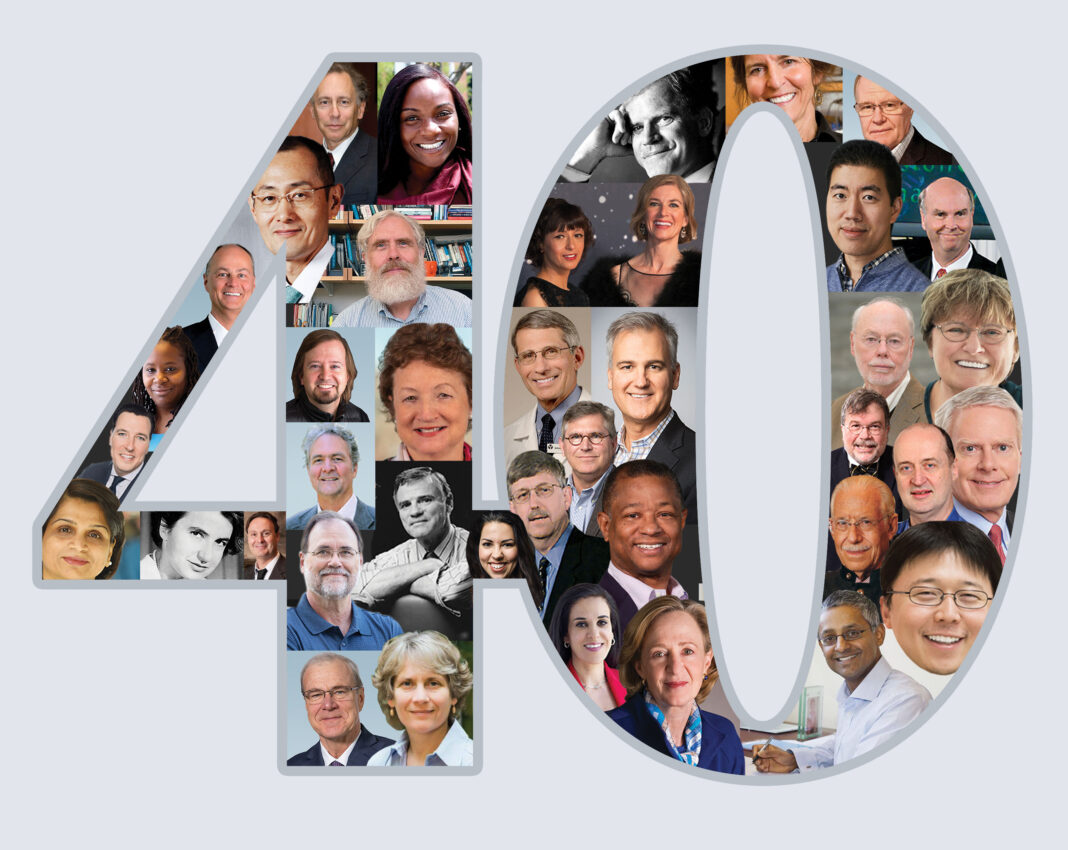To help celebrate GEN’s 40th Anniversary with this special October issue, we asked scientists and business professionals in academia and industry to give us their reflections, impressions, and insights on the biotechnology industry and the life sciences. We also queried them on what they believe the future might look like for biotechnology. We sought the thoughts and opinions of those working in areas directly or indirectly related to one or more of GEN’s editorial pillars, that is, drug discovery, OMICS, gene editing, cancer research, infectious diseases, artificial intelligence and data management, translational medicine, and financial analysis and venture capital.
We asked them, for example, what stands out about the past 40 years of biotech, what has been the biggest change in the biotech industry, what is the most exciting recent development in this industry, and what are their hopes for the future of biotech. The GEN team is most appreciative of the range of thoughtful responses that we received. We are sure that you will be pleased when you read the following pages.
To all our respondents, a huge thank you from GEN.
Joseph M. Beechem, PhD
Chief Scientific Officer and Senior Vice President, Research and Development, NanoString Technologies • OMICS
 The most amazing aspect of watching the life sciences over the past 40 years is seeing that every few years, everything changes. After the Human Genome Project, the life sciences went from cottage industry to big science. Then outlooks broadened, becoming less DNA-centric. RNA was recognized as the dynamic cell marker to measure, especially with the introduction of single-cell methods and spatial transcriptomics. Spatially resolved multi-omics will be transformative. It may even eclipse next-generation sequencing in importance.
The most amazing aspect of watching the life sciences over the past 40 years is seeing that every few years, everything changes. After the Human Genome Project, the life sciences went from cottage industry to big science. Then outlooks broadened, becoming less DNA-centric. RNA was recognized as the dynamic cell marker to measure, especially with the introduction of single-cell methods and spatial transcriptomics. Spatially resolved multi-omics will be transformative. It may even eclipse next-generation sequencing in importance.
I think it is now beyond question that the continued development of advanced life sciences technologies holds the key to solving the planet’s most pressing problems—disease, hunger, climate change. Who knows, perhaps I can add a note to GEN’s 50th anniversary issue? Or even its 100th anniversary issue, provided the life sciences revolution continues!
Deanna M. Church, PhD
Vice President, Mammalian Business Area and Software Strategy, Inscripta • OMICS
 Reflecting on the last 40 years of biotech continually brings me back to the “tech.” We have gone from barely being able to read genomes to the promise of writing genomes on a routine basis. While we are still learning to interpret and understand genomes, advances in technology are accelerating our learning. Single-cell analysis, once unthinkable, has become commonplace. The key to widespread adoption has been making the technology easy for anyone to use. Looking to the future, measurement advances in spatial biology promise to provide yet another layer of information that has been missing. Most exciting are the advances we will continue to see in genome engineering. Programmable variation coupled with single-cell readouts will accelerate our ability to interpret genomes, linking genotype to phenotype. We will no longer be limited by evolution. We can create cells to act as cellular medicines, protein factories, or environmental sensors.
Reflecting on the last 40 years of biotech continually brings me back to the “tech.” We have gone from barely being able to read genomes to the promise of writing genomes on a routine basis. While we are still learning to interpret and understand genomes, advances in technology are accelerating our learning. Single-cell analysis, once unthinkable, has become commonplace. The key to widespread adoption has been making the technology easy for anyone to use. Looking to the future, measurement advances in spatial biology promise to provide yet another layer of information that has been missing. Most exciting are the advances we will continue to see in genome engineering. Programmable variation coupled with single-cell readouts will accelerate our ability to interpret genomes, linking genotype to phenotype. We will no longer be limited by evolution. We can create cells to act as cellular medicines, protein factories, or environmental sensors.
George Church, PhD
Robert Winthrop Professor of Genetics at Harvard Medical School, Professor of Health Sciences and Technology at Harvard and MIT • OMICS
 Over the past 40 years of biotech, what stands out are the exponential improvements in reading and writing DNA. In 1981, you might have gotten a 60 base-pair sequence read for $300. Today, you’d get a high-clinical-quality diploid human 6 billion base-pair genome.
Over the past 40 years of biotech, what stands out are the exponential improvements in reading and writing DNA. In 1981, you might have gotten a 60 base-pair sequence read for $300. Today, you’d get a high-clinical-quality diploid human 6 billion base-pair genome.
The biggest change in the biotech industry has been the expansion from standalone single-protein products (drugs and enzymes) to complex genomic/cell/organismal system solutions. Recently, exciting developments in the biotechnology industry include gene therapies like Novartis’s Zolgensma and mRNA vaccines like Moderna’s Spikevax. These are great milestones, illustrating the challenges of orphan drugs and economies of scale ($2.5M and $15 per dose, respectively).
Looking to the future, I hope that we keep up the exponentials to enable equitable access to technologies and accompanying know-how; that we extend the global scale of vaccines to aging-impacted diseases; that we address the limited scale of rare diseases via affordable preventatives like premarital genetic counseling; and that we develop bioweather maps and channels for zoonotics and resistant variants via real-time, global, ubiquitous devices.
Charles Cathlin
CEO & Co-Founder, Polaris Genomics • OMICS
 If the pandemic is an earthquake, the mental health fallout we’re facing is a tsunami. Vaccines are saving lives, but there’s no vaccine to protect us from the mental health repercussions that will far outlast the virus itself. The pandemic has underscored the urgency for biotech companies like Polaris Genomics to develop novel solutions that will propel mental and behavioral healthcare into the 21st century.
If the pandemic is an earthquake, the mental health fallout we’re facing is a tsunami. Vaccines are saving lives, but there’s no vaccine to protect us from the mental health repercussions that will far outlast the virus itself. The pandemic has underscored the urgency for biotech companies like Polaris Genomics to develop novel solutions that will propel mental and behavioral healthcare into the 21st century.
The integration of genomics into patient care decisions as part of precision medicine
is long overdue. Despite the prevalence of populations standing to benefit from these
advancements, behavioral health has been an afterthought in comparison to diseases such as cancer, diabetes, and heart disease. At the junction of precision medicine and behavioral health, our vision is to reduce suicide, stigma, and suffering.
Dhrubajyoti Chattopadhyay, PhD
Vice Chancellor, AMITY University, Kolkata, India • OMICS
 In 1980, Paul Berg was the co-recipient of the Nobel Prize in Chemistry for his work on recombinant DNA technology. From those beginnings to today’s era of mRNA vaccines and CRISPR-Cas-based genome editing, the field of biotechnology has witnessed unparalleled growth and unforeseeable discoveries. These discoveries have impacted the field and beyond, including healthcare, law, business, and entrepreneurship.
In 1980, Paul Berg was the co-recipient of the Nobel Prize in Chemistry for his work on recombinant DNA technology. From those beginnings to today’s era of mRNA vaccines and CRISPR-Cas-based genome editing, the field of biotechnology has witnessed unparalleled growth and unforeseeable discoveries. These discoveries have impacted the field and beyond, including healthcare, law, business, and entrepreneurship.
Among all breakthroughs over the last 40 years, the one event that changed the field forever was the completion of the Human Genome Project. The power and ability to have rapid access to the blueprint of all forms of life on Earth combined with the technology to alter it is the closest that scientists could have ever come to the “creator” that nature is. There has been no looking back ever since.
Among the more recent developments is, of course, the development of mRNA vaccines. Although still in its nascency, the field is advancing and has the power to revolutionize healthcare and disease management. Apart from healthcare, I do want to see biotechnology contribute more actively toward environmental issues including climate change.
Alex Dickinson, PhD
Founder and Executive Chairman, ChromaCode • OMICS

I find one of the most fascinating themes of the last 40 years to be biotech’s coöption of natural phenomena to build profoundly useful genomic tools. The era kicked off in 1983 with Kary Mullis recognizing that DNA’s innate propensity for self-replication could be combined with Taq polymerase’s freakish natural ability to operate in Yellowstone’s hot springs to create PCR, the all-purpose DNA copier. A decade later, Russ Higuchi added fluorescent dyes to the mix to give us qPCR, the all-purpose DNA search engine. And now, nearly 40 years later, the technology has proven its remarkable staying power as the backbone of global pandemic mitigation—delivering billions of accurate and cost-effective diagnoses.
Another cycle of natural coöption began in 2012 when Jennifer Doudna and Emmanuelle Charpentier recognized that the CRISPR-Cas9 bacterial immune mechanism could be used as a tool for in situ genome editing. Results of a recent clinical trial, published just last month, indicate that the technique is safe and effective as a human therapy for a rare liver disease—starting no doubt another incredible multidecade cycle of nature-derived genomic tool innovation in discovery and healthcare.
Omid Farokhzad, MD
Chair and CEO, Seer Bio • OMICS
 Innovation over the past 40 years has had an incredible impact on the advancement of human health. The number of genetic tests has increased exponentially. Our arsenal of therapeutics, which was once limited to small molecules, now includes complex biological molecules and even cell therapies. Gene editing, protein engineering, and proteomics research promise additional breakthroughs.
Innovation over the past 40 years has had an incredible impact on the advancement of human health. The number of genetic tests has increased exponentially. Our arsenal of therapeutics, which was once limited to small molecules, now includes complex biological molecules and even cell therapies. Gene editing, protein engineering, and proteomics research promise additional breakthroughs.
Multidisciplinary science has caused a sea change in the biotechnology industry. The convergence of data science, engineering, biology, chemistry, materials science, artificial intelligence, and other fields has cleared the path for some great discoveries. I envision that we will integrate proteomics, genomics, and other omics approaches to gain a more comprehensive understanding of biology and develop personalized treatments. I anticipate that we will drive down costs and make treatments broadly accessible.
Eric Green, MD, PhD
Director, National Human Genome Research Institute • OMICS
 The most significant change that I have seen in the broader biotech ecosystem over the last 40 years relates to the cultural acceptance of widespread data sharing. Genomics has led the way in transforming our views about the value of unfettered access to scientific data (including unpublished data), creating opportunities for scientific and medical progress at an ever-accelerating pace. While data sharing must inherently confront various real-world challenges—most notably those related to privacy, misuse, and identifiability—the demonstrable benefits of data sharing serve to fuel the proactive study of key bioethical issues and the development of appropriate solutions. One can readily anticipate that the continued expansion of data sharing coupled with advances in data science will serve to empower biotech innovations over the next 40 years.
The most significant change that I have seen in the broader biotech ecosystem over the last 40 years relates to the cultural acceptance of widespread data sharing. Genomics has led the way in transforming our views about the value of unfettered access to scientific data (including unpublished data), creating opportunities for scientific and medical progress at an ever-accelerating pace. While data sharing must inherently confront various real-world challenges—most notably those related to privacy, misuse, and identifiability—the demonstrable benefits of data sharing serve to fuel the proactive study of key bioethical issues and the development of appropriate solutions. One can readily anticipate that the continued expansion of data sharing coupled with advances in data science will serve to empower biotech innovations over the next 40 years.
Emily Leproust, PhD
CEO and Co-Founder, Twist Bioscience • OMICS
 The Human Genome Project took 20 years to complete, and even then, more work was needed. However, building on that pivotal project, the speed of biological learning over the last 40 years has been exponential—it continues to accelerate at a faster and faster pace. It’s quite the contrast to a discipline like chemistry, where the elements have all been discovered. In biotechnology, the velocity of discovery is increasing, with direct benefit to overall health and sustainability.
The Human Genome Project took 20 years to complete, and even then, more work was needed. However, building on that pivotal project, the speed of biological learning over the last 40 years has been exponential—it continues to accelerate at a faster and faster pace. It’s quite the contrast to a discipline like chemistry, where the elements have all been discovered. In biotechnology, the velocity of discovery is increasing, with direct benefit to overall health and sustainability.
Ben Hindson, PhD
Co-Founder and Chief Scientific Officer, 10x Genomics • OMICS
 Our bodies are made up of 40 trillion cells, each with an immensely complex genome, proteome, and interactome governing quadrillions of molecules in all kinds of intricate and complicated ways. To address this complexity, we must work to understand biology on a massive scale and at the right level of resolution for individual cells, molecules, and their interactions. With next-generation sequencing, single-cell analysis, and spatial transcriptomics, we can study the minute differences in individual cells and drill down to the most fundamental level of biology.
Our bodies are made up of 40 trillion cells, each with an immensely complex genome, proteome, and interactome governing quadrillions of molecules in all kinds of intricate and complicated ways. To address this complexity, we must work to understand biology on a massive scale and at the right level of resolution for individual cells, molecules, and their interactions. With next-generation sequencing, single-cell analysis, and spatial transcriptomics, we can study the minute differences in individual cells and drill down to the most fundamental level of biology.
Our current understanding of medicine encompasses only a tiny fraction of the full complexity of biology. The key to advancing human health lies in accelerating this understanding. My hope is that the community will collaborate and work together more closely to enable more scientific discoveries faster so we can cure more diseases faster.
Molly He, PhD
Co-Founder and CEO, Element Biosciences • OMICS
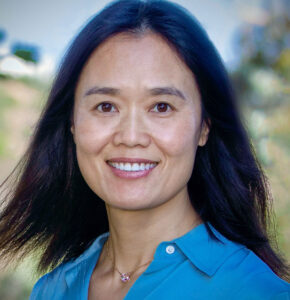 Reflecting on the last 40 years of biotechnology, I marvel at what’s possible. The declining cost and improved quality of data available from a wide variety of biotechnologies make science we couldn’t imagine 40 years ago possible. The declining cost of DNA sequencing and the availability of companion technologies for spatial genomics, proteomics, and so much more are improving our collective ability to identify and deploy personalized approaches to disease prevention, detection, and therapy. Looking to the future, I am optimistic that the revolution in biology will only accelerate as new companies seek to build on the technologies and applications available today to open the world of biology to new possibilities.
Reflecting on the last 40 years of biotechnology, I marvel at what’s possible. The declining cost and improved quality of data available from a wide variety of biotechnologies make science we couldn’t imagine 40 years ago possible. The declining cost of DNA sequencing and the availability of companion technologies for spatial genomics, proteomics, and so much more are improving our collective ability to identify and deploy personalized approaches to disease prevention, detection, and therapy. Looking to the future, I am optimistic that the revolution in biology will only accelerate as new companies seek to build on the technologies and applications available today to open the world of biology to new possibilities.
Ivan Liachko, PhD
Founder and CEO, Phase Genomics • OMICS
 As a scientist and company founder, I have really enjoyed seeing new genomic tools progress from invention to an accepted norm in society. From the developments of new RNA vaccines and precision cancer treatments to the foods we eat (for example, stronger crops and plant-based “meat”), biotechnology has prevented famines and has saved millions of lives from a variety of diseases.
As a scientist and company founder, I have really enjoyed seeing new genomic tools progress from invention to an accepted norm in society. From the developments of new RNA vaccines and precision cancer treatments to the foods we eat (for example, stronger crops and plant-based “meat”), biotechnology has prevented famines and has saved millions of lives from a variety of diseases.
But we’re also seeing another dramatic change—an acceleration of the commercialization of new genomic technologies. When I began my career, commercialization from university labs was often slow and treated with skepticism by much of the scientific community. In recent decades, we have seen an ever-surging flood of startups. Ventures spinning out from academic institutions signal the increased cooperation between research and industry that will greatly benefit humankind’s future.
Christopher E. Mason, PhD
Professor, Department of Physiology and Biophysics, Weill Cornell Medicine • OMICS
 In 40 years, we’ve gone from knowing only a handful of genes and no genomes, to a dramatically new era with an ever-erupting fountain of genetics knowledge, now spanning more than 60,000 human genes, millions of other eukaryotic and microbial genes, and millions of reference genomes and genome assemblies. We’ve sequenced DNA in hospitals and remote villages, as well as in sewers and space stations, to create a genetically quantified and data-driven world. The next 40 years might involve mapping, engineering, and utilizing genomes not just on Earth, but also, at long last, for the planets and stars we see in the sky at night.
In 40 years, we’ve gone from knowing only a handful of genes and no genomes, to a dramatically new era with an ever-erupting fountain of genetics knowledge, now spanning more than 60,000 human genes, millions of other eukaryotic and microbial genes, and millions of reference genomes and genome assemblies. We’ve sequenced DNA in hospitals and remote villages, as well as in sewers and space stations, to create a genetically quantified and data-driven world. The next 40 years might involve mapping, engineering, and utilizing genomes not just on Earth, but also, at long last, for the planets and stars we see in the sky at night.
Yan Zhang, PhD
CEO, Mission Bio • OMICS
 Technology’s evolution in the past 40 years has been astounding. Notable developments include the significant investment into space research and exploration and, of course, the focus on genetics. The treatment possibilities that cell and gene therapies present were inconceivable a few decades ago.
Technology’s evolution in the past 40 years has been astounding. Notable developments include the significant investment into space research and exploration and, of course, the focus on genetics. The treatment possibilities that cell and gene therapies present were inconceivable a few decades ago.
The single biggest change we’ve seen is the ever-increasing dependence on multidisciplinary fields of study such as genomics, proteomics, data science, and AI for the advancement of healthcare. Multiple “omics” disciplines are being consolidated into “multimodal analysis,” which can be applied at the single-cell level to clarify genotype/phenotype relationships.
Such developments will improve our understanding of disease and accelerate the development of new treatments. We are seeing the impact being played out in real time with vaccines and diagnostic breakthroughs targeting COVID-19. If medical innovation advances at the current pace, we should be able to cure cancer in our lifetimes.
Sylvain Gariel
Co-Founder and COO, DNA Script • Drug Discovery
 Synthetic biology is evolving as the main driver behind innovation in various aspects of everyday life, such as food, clothing, and packaging. Engineered microorganisms can produce a broad range of chemical or biological molecules through fermentation, which can prove more sustainable and economical than conventional methods. Synthetic DNA and RNA have now become critical for a sustainable future.
Synthetic biology is evolving as the main driver behind innovation in various aspects of everyday life, such as food, clothing, and packaging. Engineered microorganisms can produce a broad range of chemical or biological molecules through fermentation, which can prove more sustainable and economical than conventional methods. Synthetic DNA and RNA have now become critical for a sustainable future.
In healthcare, personalized diagnostics and therapeutics will be realized at scale along with personalized oncology. Biotech will contend with other major challenges such as global warming, infectious diseases, food insecurity, and value chain disruptions. Portable and customizable synthetic biology solutions will be key to extending lifespans and sustaining the health of this planet.
Aviv Regev, PhD
Head of Genentech Research and Early Development • Drug Discovery
 With the rise of powerful new biological tools (such as CRISPR, organoid models, and single-cell and spatial genomics), advances in machine learning algorithms, and many new therapeutic modalities, we are at an exciting inflection point. We can access human biology directly through genetics and patient-derived samples; collect large amounts of fine-grained molecular and spatial information on these samples and in biological experiments; use new machine learning algorithms and mathematical approaches to learn their features and search vast chemical and biological spaces; and tap into a wide array of new therapeutic modalities to build the best medicines for the targets we discover. Each of these advances on its own would be impactful—but together, their impact multiplies to deliver many more solutions for patients at greater speed and predictability—and at lower cost. This is a thrilling opportunity for biotech to make an even greater difference in people’s lives.
With the rise of powerful new biological tools (such as CRISPR, organoid models, and single-cell and spatial genomics), advances in machine learning algorithms, and many new therapeutic modalities, we are at an exciting inflection point. We can access human biology directly through genetics and patient-derived samples; collect large amounts of fine-grained molecular and spatial information on these samples and in biological experiments; use new machine learning algorithms and mathematical approaches to learn their features and search vast chemical and biological spaces; and tap into a wide array of new therapeutic modalities to build the best medicines for the targets we discover. Each of these advances on its own would be impactful—but together, their impact multiplies to deliver many more solutions for patients at greater speed and predictability—and at lower cost. This is a thrilling opportunity for biotech to make an even greater difference in people’s lives.
Gary Zieziula
President and Region Head North America, Kyowa Kirin • Drug Discovery
 Over the past year, we have seen our industry swiftly mobilize to address the urgency of the pandemic. This has underscored the importance of our work and of collaborating to improve outcomes for patients. Across the biopharmaceutical industry, we share a responsibility to continue collaborating so that new science and discoveries with the potential to address patient needs can advance to market quickly. Through teamwork and strategic partnerships, we can have a truly profound impact on patients and fill our future pipelines across multiple therapeutic areas.
Over the past year, we have seen our industry swiftly mobilize to address the urgency of the pandemic. This has underscored the importance of our work and of collaborating to improve outcomes for patients. Across the biopharmaceutical industry, we share a responsibility to continue collaborating so that new science and discoveries with the potential to address patient needs can advance to market quickly. Through teamwork and strategic partnerships, we can have a truly profound impact on patients and fill our future pipelines across multiple therapeutic areas.
We also have increased motivation to ensure our discoveries and medicines are available to more patients. This starts by nurturing a diverse talent community that, in turn, helps champion the interests of diverse patients with unmet needs. As leaders, we must prioritize initiatives that help diversify our industry, our businesses, and our research. In doing so, we can say we’ve truly delivered transformative breakthroughs.
David Hughes, DPhil
CEO, CN Bio • Drug Discovery
 Over the past 40 years, the biotech industry has evolved hugely to provide new and advanced treatment options across diseases such as arthritis, cancer, and multiple sclerosis. Clearly, this sector will continue to drive innovation throughout the 2020s, with new modality approaches being explored by startups while also becoming firmly established in the pipelines of every major pharma company. Despite these significant developments, the cost of the drug discovery process remains high, while the efficiency of the process stays low. My future hope is that new tools, such as AI, humanized mice, organoids, and organ- and body-on-a-chip technologies, will address process limitations in the laboratory to power the next wave of biotech discovery and enrich our understanding of human biology. These technologies will enable scientists to make smarter choices based upon human-relevant insights earlier in drug discovery to facilitate a faster and more cost-effective process.
Over the past 40 years, the biotech industry has evolved hugely to provide new and advanced treatment options across diseases such as arthritis, cancer, and multiple sclerosis. Clearly, this sector will continue to drive innovation throughout the 2020s, with new modality approaches being explored by startups while also becoming firmly established in the pipelines of every major pharma company. Despite these significant developments, the cost of the drug discovery process remains high, while the efficiency of the process stays low. My future hope is that new tools, such as AI, humanized mice, organoids, and organ- and body-on-a-chip technologies, will address process limitations in the laboratory to power the next wave of biotech discovery and enrich our understanding of human biology. These technologies will enable scientists to make smarter choices based upon human-relevant insights earlier in drug discovery to facilitate a faster and more cost-effective process.
Brandi Davis-Dusenbery, PhD
Chief Scientific Officer, Seven Bridges • OMICS
 One of the biggest shifts that has long-term impact for the biotech industry is an overarching evolution of data sharing and reuse, both within organizations as well as between researchers in public and private settings. This is as much a social achievement as a technological one, driven by the recognition that data becomes more powerful when combined with other data. This evolution has been catalyzed by technological advances that streamline the combination of larger and larger multimodal datasets using standardized approaches to drive dramatic value across the drug discovery life cycle. Looking into the future, we believe organizations that can effectively leverage and combine internal data assets with those generated through large-scale public efforts will drive personalized therapeutics with reduced financial investment and accelerated time to market.
One of the biggest shifts that has long-term impact for the biotech industry is an overarching evolution of data sharing and reuse, both within organizations as well as between researchers in public and private settings. This is as much a social achievement as a technological one, driven by the recognition that data becomes more powerful when combined with other data. This evolution has been catalyzed by technological advances that streamline the combination of larger and larger multimodal datasets using standardized approaches to drive dramatic value across the drug discovery life cycle. Looking into the future, we believe organizations that can effectively leverage and combine internal data assets with those generated through large-scale public efforts will drive personalized therapeutics with reduced financial investment and accelerated time to market.
Rachel Haurwitz, PhD
President and CEO, Caribou Biosciences • Genome Editing
 Although I’m obviously biased, I think that CRISPR genome editing is incredibly exciting, and it has already significantly changed what we can do in the life sciences. First, it has been rolled out as a readily accessible tool in laboratories around the globe, enabling all kinds of important research from agriculture to human disease. Second, and even more exciting, it’s being explored by many developers for new therapeutic approaches including ex vivo cell therapies as well as in vivo gene therapies. CRISPR genome editing unlocks the potential for a wide range of genetically based therapies for cancer, rare diseases, and many other therapeutic areas.
Although I’m obviously biased, I think that CRISPR genome editing is incredibly exciting, and it has already significantly changed what we can do in the life sciences. First, it has been rolled out as a readily accessible tool in laboratories around the globe, enabling all kinds of important research from agriculture to human disease. Second, and even more exciting, it’s being explored by many developers for new therapeutic approaches including ex vivo cell therapies as well as in vivo gene therapies. CRISPR genome editing unlocks the potential for a wide range of genetically based therapies for cancer, rare diseases, and many other therapeutic areas.
I’m hopeful that the vast potential of genetic approaches to medicine will come to fruition in meaningful ways such that gene and cell therapies are a robust addition to small-molecule and antibody drugs and result in truly significant outcomes for patients.
Laura Sepp-Lorenzino, PhD
Chief Scientific Officer, Intellia Therapeutics • Genome Editing
 Over the course of my career, I’ve seen biotech evolve to help shape the future of medicine. I’ve worked on small molecules, RNA interference, and CRISPR. Advances in these areas are changing how we think about severe diseases. For example, CRISPR has opened the door to treating, reversing, or potentially curing previously inaccessible diseases.
Over the course of my career, I’ve seen biotech evolve to help shape the future of medicine. I’ve worked on small molecules, RNA interference, and CRISPR. Advances in these areas are changing how we think about severe diseases. For example, CRISPR has opened the door to treating, reversing, or potentially curing previously inaccessible diseases.
In June 2021, data from a clinical study by Intellia was published in the New England Journal of Medicine. This was the first-ever clinical data supporting the safety and efficacy of a systemically administered CRISPR-based therapeutic.
At Intellia, I’ve had the honor of leading research and early development. This responsibility has prompted me to create a nurturing learning environment across the organization, and to mentor emerging leaders in the community—leaders that include youths, minorities, and women. Need I point out that more women are taking leading roles throughout the industry?
Fyodor Urnov, PhD
Director, Technology and Translation, Innovative Genomics Institute • Genome Editing

Humans make up the only species that genetically engineers itself. Multiple gene therapy medicines are approved for indications as distinct as leukemia, congenital blindness, and muscular atrophy; more are on approach. Standing on the shoulders of this effort is targeted genetic engineering, also known as genome editing, with formidable early-stage clinical data (for the hemoglobinopathies and amyloidosis) reducing to practice the concept of “in the age of CRISPR, the entire human genome is a druggable target.”
Actionable promise for expanding genomic therapies beyond Mendelian conditions and into near every indication space—including highly prevalent diseases such as CAD, neurodegeneration, and pain—stems from the growth of (1) novel technologies for targeted genome and epigenome engineering; (2) nonviral approaches to deliver these in vivo; and (3) the use of CRISPR-based functional genomics to uncover new targets that CRISPR itself can drug. Delivering genomic cures to patients will require innovations in technology, regulatory, and healthcare economics spaces to address the key issue of health justice. Our generation will thus determine just how equitable our gene-edited species will become.
Eric Rhodes
CEO, ERS Genomics • Genome Editing

One of the biggest achievements in biotech over the past 40 years has been the genome revolution. The ability to decode entire genomes, through whole genome sequencing, meant we could identify individual genes and understand how differences at the DNA level were responsible for various functions. To benefit from this information, we also needed the ability to manipulate DNA, and gene editing allowed exactly that. Early technologies could manipulate DNA in living organisms, but their use was limited by the complexities and costs associated with each platform. The introduction of CRISPR technology removed those barriers and opened up the potential for gene editing across many disciplines, allowing us to directly address genetic diseases and design more targeted therapies. As we untangle complex biological processes, we can rebuild systems in more efficient ways. Gene editing can and will contribute to a healthier and more sustainable future for our planet and its inhabitants.
Ed Boyden, PhD
Y. Eva Tan Professor in Neurotechnology, MIT Howard Hughes Medical Institute, McGovern Institute Professor • Translational Medicine
 Inventing new treatments for diseases is very difficult. Many treatments fail because of a lack of efficacy, or because of side effects. The cost to approval can be billions of dollars, and even the treatments that get approved often address the disease only partially. One exciting development is the invention of new technologies that can pinpoint fundamental molecular and cellular mechanisms that, when perturbed, could help remedy a disease. New tools for mapping and controlling biological systems with molecular and cellular precision, even in intact tissue and in vivo contexts, have been sweeping through biological science, helping reveal new targets and strategies for treating diseases. Some therapies resulting from these discoveries are now showing promise in human clinical trials. Knowledge of ground truth, mechanistic handles on diseases may reduce the risk and cost associated with creating new treatments, even as efficacy may increase.
Inventing new treatments for diseases is very difficult. Many treatments fail because of a lack of efficacy, or because of side effects. The cost to approval can be billions of dollars, and even the treatments that get approved often address the disease only partially. One exciting development is the invention of new technologies that can pinpoint fundamental molecular and cellular mechanisms that, when perturbed, could help remedy a disease. New tools for mapping and controlling biological systems with molecular and cellular precision, even in intact tissue and in vivo contexts, have been sweeping through biological science, helping reveal new targets and strategies for treating diseases. Some therapies resulting from these discoveries are now showing promise in human clinical trials. Knowledge of ground truth, mechanistic handles on diseases may reduce the risk and cost associated with creating new treatments, even as efficacy may increase.
Lorna Ewart, PhD
Executive Vice President Science, Emulate • Translational Medicine
 The last 40 years of biotechnology development have been an electrifying cycle of innovation and market disruption. Having the opportunity not only to observe, but also to actively participate in the advancement of truly innovative technologies and therapies, has been the highlight of my scientific career. Perhaps my greatest recent milestone has been witnessing the surge in investment in this space. Seeing firsthand the explosive growth of commitment into transformative technologies, whether that be the development of organ-chips or the adoption of mRNA technology for COVID-19 vaccinations, energizes me each and every day, and reaffirms my dedication to improving the health outcomes of people around the globe.
The last 40 years of biotechnology development have been an electrifying cycle of innovation and market disruption. Having the opportunity not only to observe, but also to actively participate in the advancement of truly innovative technologies and therapies, has been the highlight of my scientific career. Perhaps my greatest recent milestone has been witnessing the surge in investment in this space. Seeing firsthand the explosive growth of commitment into transformative technologies, whether that be the development of organ-chips or the adoption of mRNA technology for COVID-19 vaccinations, energizes me each and every day, and reaffirms my dedication to improving the health outcomes of people around the globe.
Caroline Loew, PhD
President and CEO, Glympse Bio • Translational Medicine
 Diagnosing many diseases is still unacceptably hard and complex. We all know someone who has experienced a protracted diagnostic odyssey before getting a serious or chronic disease diagnosed. New classes of noninvasive protease-mediated diagnostics (such as those being developed by Glympse Bio) have the potential to change that, measuring real-time disease activity across a wide range of diseases that today are very challenging to either diagnose or track.
Diagnosing many diseases is still unacceptably hard and complex. We all know someone who has experienced a protracted diagnostic odyssey before getting a serious or chronic disease diagnosed. New classes of noninvasive protease-mediated diagnostics (such as those being developed by Glympse Bio) have the potential to change that, measuring real-time disease activity across a wide range of diseases that today are very challenging to either diagnose or track.
Jeanne Loring, PhD
Professor Emeritus, Founding Director, Center for Regenerative Medicine, Department of Molecular Medicine, Scripps Research • Translational Medicine
 Over the last several decades, I’ve moved from academia to biotech, back to academia, then back to biotech. Now I’ve reached equilibrium, as both a professor emeritus at a major research institute and the founder of a growing biotechnology company. At the beginning of this journey, I attracted scorn from whatever side I was not on at the moment. It’s now been a long time since I was last reviled for being too scholarly or too techy, and this is the biggest change I’ve seen: the growing respect of each side for the other. For 30 years, I’ve reviewed grant applications for academic and business NIH study sections, always being welcome because I knew the coolest technologies. Over time, I learned about neural development, knockout mice, monoclonals, microarrays, DNA sequencing, human pluripotent stem cells, RNA sequencing, microRNAs, machine learning, epigenetics, single-cell genomics, and organoids. Without biotechnology companies, these things would have remained hidden in individuals’ specialized academic laboratories. Biotech is where collaboration really happens
Over the last several decades, I’ve moved from academia to biotech, back to academia, then back to biotech. Now I’ve reached equilibrium, as both a professor emeritus at a major research institute and the founder of a growing biotechnology company. At the beginning of this journey, I attracted scorn from whatever side I was not on at the moment. It’s now been a long time since I was last reviled for being too scholarly or too techy, and this is the biggest change I’ve seen: the growing respect of each side for the other. For 30 years, I’ve reviewed grant applications for academic and business NIH study sections, always being welcome because I knew the coolest technologies. Over time, I learned about neural development, knockout mice, monoclonals, microarrays, DNA sequencing, human pluripotent stem cells, RNA sequencing, microRNAs, machine learning, epigenetics, single-cell genomics, and organoids. Without biotechnology companies, these things would have remained hidden in individuals’ specialized academic laboratories. Biotech is where collaboration really happens
Ted W. Love, MD
President and CEO, Global Blood Therapeutics (GBT) • Translational Medicine
 The biopharmaceutical industry is making a profound impact as we continue to accelerate medicines that modify disease to extend and improve human lives. From my time as a medical doctor to leading GBT today, I’ve watched this industry evolve—particularly when it comes to listening to patients. Connecting with patient communities allows us to better problem solve, rapidly innovate, and ultimately make the greatest difference. Yet for a field driven by constant innovation and novel approaches, it has taken some time for us to advance health equity. Biopharmaceutical companies are beginning to take the right steps in areas like diversifying our clinical trials and corporate boards, but this is only the beginning. Let’s focus our innovation on transforming the lives of the most vulnerable and underserved, such as patients living with sickle-cell disease. It is our duty to improve health for all people—and this industry can do it
The biopharmaceutical industry is making a profound impact as we continue to accelerate medicines that modify disease to extend and improve human lives. From my time as a medical doctor to leading GBT today, I’ve watched this industry evolve—particularly when it comes to listening to patients. Connecting with patient communities allows us to better problem solve, rapidly innovate, and ultimately make the greatest difference. Yet for a field driven by constant innovation and novel approaches, it has taken some time for us to advance health equity. Biopharmaceutical companies are beginning to take the right steps in areas like diversifying our clinical trials and corporate boards, but this is only the beginning. Let’s focus our innovation on transforming the lives of the most vulnerable and underserved, such as patients living with sickle-cell disease. It is our duty to improve health for all people—and this industry can do it
Mei Mei Hu, JD
CEO, Vaxxinity • Translational Medicine
 If there has been a silver lining to the COVID-19 pandemic, it has been a renaissance in the power of vaccines to keep us healthy. We have also seen that vaccines can be developed at unprecedented speeds to help nations globally find their way back to normalcy, while being affordable, manufacturable at scale, and accessible in all parts of the world. This year, we will see a second wave of vaccines geared to contribute to the longer-term needs of the COVID-19 vaccine market, namely, equitable distribution and combating variants of concern. The latter is addressed by at least some ability to boost the immune response of those already vaccinated, depending on the technology used. Vaxxinity is addressing these needs with the development of the world’s first multitope synthetic peptide–based vaccine with its design for basic immunization as well as for serving as a universal booster vaccine, irrespective of the vaccine used for priming. Vaxxinity’s vision is to use our proprietary technology to develop vaccines to fight Alzheimer’s, Parkinson’s, and other chronic diseases.
If there has been a silver lining to the COVID-19 pandemic, it has been a renaissance in the power of vaccines to keep us healthy. We have also seen that vaccines can be developed at unprecedented speeds to help nations globally find their way back to normalcy, while being affordable, manufacturable at scale, and accessible in all parts of the world. This year, we will see a second wave of vaccines geared to contribute to the longer-term needs of the COVID-19 vaccine market, namely, equitable distribution and combating variants of concern. The latter is addressed by at least some ability to boost the immune response of those already vaccinated, depending on the technology used. Vaxxinity is addressing these needs with the development of the world’s first multitope synthetic peptide–based vaccine with its design for basic immunization as well as for serving as a universal booster vaccine, irrespective of the vaccine used for priming. Vaxxinity’s vision is to use our proprietary technology to develop vaccines to fight Alzheimer’s, Parkinson’s, and other chronic diseases.
Bee Luan Khoo, PhD
Assistant Professor of Biomedical Engineering, City University of Hong Kong • Translational Medicine
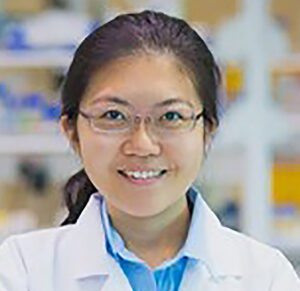 The use of point-of-care devices to achieve personalized medicine has always been the focus of our team. With the advancements in miniaturization, it is now possible to integrate devices with different functions, and complex procedures can be realized with the push of a button. With artificial intelligence and smartphone applications to automatically read data, technologies for multimodal detection and management of diseases at home are within reach. Our team is committed to achieving a cost-effective combination of liquid biopsy and microfluidics technology to provide the possibility of real-time monitoring of metastasis in a noninvasive and inexpensive way. Our recent work on biosensors for cancer modeling and drug screening has been recognized by the MIT Technology Review, the Japanese Medical Research and Development Agency, and the New York Academy of Sciences, and is an example of the future of biotechnology.
The use of point-of-care devices to achieve personalized medicine has always been the focus of our team. With the advancements in miniaturization, it is now possible to integrate devices with different functions, and complex procedures can be realized with the push of a button. With artificial intelligence and smartphone applications to automatically read data, technologies for multimodal detection and management of diseases at home are within reach. Our team is committed to achieving a cost-effective combination of liquid biopsy and microfluidics technology to provide the possibility of real-time monitoring of metastasis in a noninvasive and inexpensive way. Our recent work on biosensors for cancer modeling and drug screening has been recognized by the MIT Technology Review, the Japanese Medical Research and Development Agency, and the New York Academy of Sciences, and is an example of the future of biotechnology.
Sheila Mikhail
CEO and Co-Founder, AskBio • Translational Medicine
 After an extended period of stagnation, gene therapy has recently experienced a renaissance as a result of technological advancements. Scientists evolved safer, more efficient viral vectors (most notably, AAV) with better targeting capability and controlled expression. Manufacturing processes were scaled up. These efforts have resulted in two FDA-approved in vivo gene therapies, and additional promising therapies are in clinical development. While the first generation of gene therapies focused on delivery of transgenes, gene editing approaches have entered the clinic that allow precise modification of human genome sequences. Gene editing technologies are evolving quickly from nuclease-based systems to base editing and prime editing systems, which enable the precise alteration of genomic sequences in the absence of DNA breaks and without reliance on the activity of endogenous DNA repair pathways. Further advancements in the technology will continue to fuel innovation in gene therapy.
After an extended period of stagnation, gene therapy has recently experienced a renaissance as a result of technological advancements. Scientists evolved safer, more efficient viral vectors (most notably, AAV) with better targeting capability and controlled expression. Manufacturing processes were scaled up. These efforts have resulted in two FDA-approved in vivo gene therapies, and additional promising therapies are in clinical development. While the first generation of gene therapies focused on delivery of transgenes, gene editing approaches have entered the clinic that allow precise modification of human genome sequences. Gene editing technologies are evolving quickly from nuclease-based systems to base editing and prime editing systems, which enable the precise alteration of genomic sequences in the absence of DNA breaks and without reliance on the activity of endogenous DNA repair pathways. Further advancements in the technology will continue to fuel innovation in gene therapy.
Berndt Modig
Co-Founder and CEO, Pharvaris • Translational Medicine
 The last five years have seen an increase in the approval of novel medicines with the acceleration of new technologies, new science, and patient-focused drug development. We anticipate this trend will continue over the next five years with new options for patients from emerging treatment modalities, and with improved opportunities for targeted medicines from established modalities. Patients continue to seek alternatives that effectively and safely treat their conditions while also helping them thrive. We see these developments as building on the promise to patients of medicines that restore both health and quality of life.
The last five years have seen an increase in the approval of novel medicines with the acceleration of new technologies, new science, and patient-focused drug development. We anticipate this trend will continue over the next five years with new options for patients from emerging treatment modalities, and with improved opportunities for targeted medicines from established modalities. Patients continue to seek alternatives that effectively and safely treat their conditions while also helping them thrive. We see these developments as building on the promise to patients of medicines that restore both health and quality of life.
Nicole Paulk, PhD
Professor, AAV Gene Therapy, University of California, San Francisco • Translational Medicine
 I hope we will both leverage and accelerate the special moment we’re experiencing in the history of medicine as it relates to gene therapy. This is the third transformative moment in the history of drug development, where a new technology positively leapfrogs what was possible and transforms the lives of patients. This began in 1796 when Jenner invented the smallpox vaccine and sparked the vaccine revolution, and was then continued in 1928 when Fleming discovered penicillin and forever changed the world with the advent of antibiotics. I think gene therapy and genome editing represent the third transformation, where intractable deadly diseases that we couldn’t even treat will now be cured with genetic medicine. I still don’t think most people have grasped how powerful this technology is. We are literally living through the future.
I hope we will both leverage and accelerate the special moment we’re experiencing in the history of medicine as it relates to gene therapy. This is the third transformative moment in the history of drug development, where a new technology positively leapfrogs what was possible and transforms the lives of patients. This began in 1796 when Jenner invented the smallpox vaccine and sparked the vaccine revolution, and was then continued in 1928 when Fleming discovered penicillin and forever changed the world with the advent of antibiotics. I think gene therapy and genome editing represent the third transformation, where intractable deadly diseases that we couldn’t even treat will now be cured with genetic medicine. I still don’t think most people have grasped how powerful this technology is. We are literally living through the future.
Noah Nasser, PhD
CEO, Serimmune • Translational Medicine
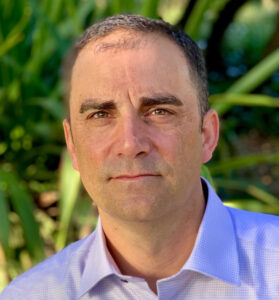 I began my studies about the same time that the Human Genome Project kicked off, which helped spark my interest in molecular biology. Like many others at the time, I expected that deciphering the genome would provide so many answers. Of course it did, but more interestingly, the massive genomics effort opened the floodgates to a torrent of new questions.
I began my studies about the same time that the Human Genome Project kicked off, which helped spark my interest in molecular biology. Like many others at the time, I expected that deciphering the genome would provide so many answers. Of course it did, but more interestingly, the massive genomics effort opened the floodgates to a torrent of new questions.
Now, big data and machine learning are revolutionizing the next wave of biology. A genome can be sequenced in a matter of hours rather than decades, and we can layer all kinds of complexity on top of it—epigenome, proteome, immunome, and microbiome information. We are just beginning to visualize the intricacies of biology writ large. Layering together and analyzing biological information will pave the way to the next breakthroughs.
Karen Zaderej
Chairman, CEO, and President, Axogen • Translational Medicine
 The biotech industry is demonstrating the growing importance of improving patient quality of life as well as impacting the progression of significant diseases. The promise of regenerative medicine and that of cell therapy are now realities. Technology and regulatory pathways are evolving, enabling biotech innovators and healthcare providers to provide off-the-shelf and personalized medicine solutions harnessing the healing capacity of the body. We have the opportunity to reduce pain, improve mobility, heal wounds, restore sensation, and improve overall quality of life. We must continue to innovate with improved patient outcomes top of mind to alleviate these burdensome symptoms.
The biotech industry is demonstrating the growing importance of improving patient quality of life as well as impacting the progression of significant diseases. The promise of regenerative medicine and that of cell therapy are now realities. Technology and regulatory pathways are evolving, enabling biotech innovators and healthcare providers to provide off-the-shelf and personalized medicine solutions harnessing the healing capacity of the body. We have the opportunity to reduce pain, improve mobility, heal wounds, restore sensation, and improve overall quality of life. We must continue to innovate with improved patient outcomes top of mind to alleviate these burdensome symptoms.
Ger Brophy, PhD
Executive Vice President, Biopharma Production, Avantor • Bioprocessing
 As I look back on the last four decades, I am struck by the convergence of multiple scientific fields. I am also humbled that this was possible and that such extraordinary outcomes are being achieved. It’s worth reflecting on some of the converging strands. Our understanding of clinical disease mechanisms at the molecular level has advanced significantly, laying the foundations for personalized medicine, uncovering why only some patients’ diseases respond to certain therapies, and allowing our treatment approaches to be adjusted accordingly.
As I look back on the last four decades, I am struck by the convergence of multiple scientific fields. I am also humbled that this was possible and that such extraordinary outcomes are being achieved. It’s worth reflecting on some of the converging strands. Our understanding of clinical disease mechanisms at the molecular level has advanced significantly, laying the foundations for personalized medicine, uncovering why only some patients’ diseases respond to certain therapies, and allowing our treatment approaches to be adjusted accordingly.
Powerful new platforms such as cell and gene therapies have also emerged, generating new hope in the fight against chronic and terminal diseases. It’s been encouraging that technologies underpinning these platforms have quickly pivoted to new applications such as COVID-19 vaccines. And the emergence of cell-free systems, like the game-changing mRNA technologies, give us a glimpse of where the field may go next.
Lastly, industrial production technologies such as single-use manufacturing systems have been instrumental in bringing these therapies to the market at scale both safely and efficiently. Looking forward, I expect advances in data science and analytics to complement these advances, and I look forward to the expected and unexpected discoveries yet to come.
Tia Lyles-Williams
Founder and CEO, LucasPye • Bioprocessing
 The pace of innovation in biotechnology has rapidly increased over the past 40 years. We’re innovating in our equipment, methodologies, and software technologies to rapidly develop the appropriate paths forward for treating patients with various disease/virus indications. We’re expanding our use of genetic materials and our applications of genomic data. We’re also continuing to tweak our manufacturing processes, raw material components, and human administration pathways to reduce risks as well as costs for patients.
The pace of innovation in biotechnology has rapidly increased over the past 40 years. We’re innovating in our equipment, methodologies, and software technologies to rapidly develop the appropriate paths forward for treating patients with various disease/virus indications. We’re expanding our use of genetic materials and our applications of genomic data. We’re also continuing to tweak our manufacturing processes, raw material components, and human administration pathways to reduce risks as well as costs for patients.
The biggest changes in biotechnology include developments in precision medicine and GMOs. Precision medicine and GMOs are bound to influence our longevity, particularly now that increasingly adverse conditions on Earth are threatening to spread disease and hunger.
I am hopeful that biotechnology will promote diverse, inclusive, and equitable practices that will benefit all members of the human race—and our animal neighbors, too. These practices will sustain innovation and reduce costs for biotech companies and patients alike.
Pietro Perrone, PhD
Senior Project Engineer, Automation Applications, Cytiva • Bioprocessing
 Genetics—Molecular Biology—Clones—DNA—In Vitro Culture—Transgenic Mice—Gene Expression—Hybridomas—and many more… Forty years ago, these words were at the infancy of the biotechnology industry. How far have we come? That excitement still resonates today. Reliance on the distribution of information was critical in the evolution. Printed publications provided the venue to keep updates flowing, while the biotechnology developments provided exciting news material. GEN helped fuel the fire.
Genetics—Molecular Biology—Clones—DNA—In Vitro Culture—Transgenic Mice—Gene Expression—Hybridomas—and many more… Forty years ago, these words were at the infancy of the biotechnology industry. How far have we come? That excitement still resonates today. Reliance on the distribution of information was critical in the evolution. Printed publications provided the venue to keep updates flowing, while the biotechnology developments provided exciting news material. GEN helped fuel the fire.
The use, value, and resulting growth of biologics are testaments that the path continues to be explored and provides patients with therapeutics that are marvels of technology.
We need to get the medicine into the patient to alleviate the patient’s condition with minimal side effects. The application of target-specific therapeutics has earned its stripes. And we continue to improve with more condition-specific therapeutics and with better methods to target the condition rather than flood the patient with the therapeutic. These objectives remain important to the industry while we now have an expanded tool chest.
We need to understand the inner workings of biological systems to leverage their abilities, and we need to apply technologies to facilitate and amplify the effectiveness of therapeutics. It’s not just a spate of improvements—it’s a paradigm shift. The constant value of efficiently using resources will further guide this shift and help us transition from manual operations to intensified and automated processes. What role will each of us play in the transition? Communication—in print or pixels— will surely be a major factor.
Terri Love
Senior Biomanufacturing Engineer, Merck Group • Bioprocessing
 I have been working in biotech for nearly 20 years, most recently with the Life Science business of Merck, Darmstadt, Germany, whose U.S. and Canada business operates as MilliporeSigma. For me, it is exciting to be part of the move from batch to continuous processing, and of the shift to the Industry 4.0 paradigm. We have seen an evolution from discrete unit operations to intensified processes supported by the application of process analytical technology to maximize both productivity and product quality.
I have been working in biotech for nearly 20 years, most recently with the Life Science business of Merck, Darmstadt, Germany, whose U.S. and Canada business operates as MilliporeSigma. For me, it is exciting to be part of the move from batch to continuous processing, and of the shift to the Industry 4.0 paradigm. We have seen an evolution from discrete unit operations to intensified processes supported by the application of process analytical technology to maximize both productivity and product quality.
The future of bioprocessing lies within this integrated state, with facilities of the future operating fully continuous processes, using closed systems and a digitally adaptive plant. This is made possible by advances in technologies such as single-use systems, flow-through chromatography, and single-pass tangential flow filtration. Biomanufacturing will offer greater flexibility, greater productivity, and a reduced facility footprint.
Jongyoon Han, PhD
Professor of Electrical Engineering and Professor of Biological Engineering, MIT • Bioprocessing
 Recently, we began seeing more robust deployment of many new ideas in microfluidics into the biopharmaceutical workflow, in areas such as adventitious agent monitoring, upstream and downstream processing, and release testing. Emerging from analytical chemistry, the field of microfluidics has developed many innovative ways to manipulate and analyze biomolecules and cells, which are now increasingly integrated into biomanufacturing. This will lead to increased automation, better safety and productivity, and ultimately more cost-effective production of critical cell and protein biologics.
Recently, we began seeing more robust deployment of many new ideas in microfluidics into the biopharmaceutical workflow, in areas such as adventitious agent monitoring, upstream and downstream processing, and release testing. Emerging from analytical chemistry, the field of microfluidics has developed many innovative ways to manipulate and analyze biomolecules and cells, which are now increasingly integrated into biomanufacturing. This will lead to increased automation, better safety and productivity, and ultimately more cost-effective production of critical cell and protein biologics.
Yvette Stallwood, PhD
Head of Protein Services, Lonza • Bioprocessing
 There have been many exciting recent developments in the biotech industry, from technologies being used to develop and manufacture biopharmaceuticals to the types of products being developed. One of the most exciting is the increased use of bioinformatics, protein engineering, and risk mitigation platforms. Modeling and predictive and de-risking tools are now used as standard across the board during early-stage development. The use of these tools is helping to reduce costs and speed products to market. They have also helped to decrease timelines, especially from gene to IND, which, in the end, benefits the patient most.
There have been many exciting recent developments in the biotech industry, from technologies being used to develop and manufacture biopharmaceuticals to the types of products being developed. One of the most exciting is the increased use of bioinformatics, protein engineering, and risk mitigation platforms. Modeling and predictive and de-risking tools are now used as standard across the board during early-stage development. The use of these tools is helping to reduce costs and speed products to market. They have also helped to decrease timelines, especially from gene to IND, which, in the end, benefits the patient most.
Unlike other areas in pharmaceutical manufacturing, early development is mostly carried out by small biotech companies. At Lonza, about 90% of our early development customers are small or emerging biotech companies. At the outset of development, or in late discovery, we work to design a comprehensive plan, utilizing these tools to ensure manufacturing processes are as safe and efficient as possible at each phase of development.
Weichang Zhou, PhD
Executive Vice President and Chief Technology Officer, WuXi Biologics • Bioprocessing
 I have been working in the biotech and pharma industry for nearly 30 years. The most exciting recent development to me is how our industry has been closely collaborating to develop and manufacture vaccines and biologics against COVID-19 at unprecedented speed since early 2020. It is also rewarding to see the gradual adoption of novel technology platforms, such as single-use bioreactors and continuous bioprocessing, to improve productivity and reduce cost of goods.
I have been working in the biotech and pharma industry for nearly 30 years. The most exciting recent development to me is how our industry has been closely collaborating to develop and manufacture vaccines and biologics against COVID-19 at unprecedented speed since early 2020. It is also rewarding to see the gradual adoption of novel technology platforms, such as single-use bioreactors and continuous bioprocessing, to improve productivity and reduce cost of goods.
By closely collaborating with innovative biotech and experienced pharma partners, WuXi
Biologics has been able to contribute to an essential effort: accelerating the development of neutralizing monoclonal antibodies against COVID-19.
Integrated and transformative methodologies have accelerated product development and approval timelines without compromising quality and safety. The timeline from DNAs to INDs was shortened to 3-6 months, while within 14 months, neutralizing monoclonal antibodies were developed from DNAs to EUAs (Emergency Use Authorizations), and hundreds of kilograms were manufactured for therapeutic applications. I expect the knowledge gained will be integrated for the development of other therapeutic biologics for combating life-threating diseases in the future.
In addition, continuous bioprocessing will increasingly be applied for manufacturing various biologics modalities, including monoclonal and bispecific antibodies, fusion proteins, and recombinant proteins.
Neil Bell
Chief Development Officer, Avacta • Cancer Research
 The survival rate for cancer patients has improved dramatically in the past 40 years thanks to advances in surgery, immuno-oncology, and radio- and chemotherapies. Despite being a vital pillar in standard of care for many cancers and representing a market of over $50 billion, chemotherapy remains associated with inconsistent responses, with its use limited by severe systemic toxicities which consequently restrict the benefit to patients.
The survival rate for cancer patients has improved dramatically in the past 40 years thanks to advances in surgery, immuno-oncology, and radio- and chemotherapies. Despite being a vital pillar in standard of care for many cancers and representing a market of over $50 billion, chemotherapy remains associated with inconsistent responses, with its use limited by severe systemic toxicities which consequently restrict the benefit to patients.
There is still huge potential for the development of safer cancer therapy options, including pro-drug forms of standard chemotherapies that are activated only in the tumor microenvironment, and synergizing the innate and adaptive immune responses through combination with next-generation immunotherapies.
As innovation and collaboration in the industry advance our understanding of specific tumor characteristics, we can harness these discoveries to transform and refine the therapeutic options available, and offer more effective, kinder, and affordable choices, without the debilitating side effects.
Fabian Gerlinghaus
Co-Founder and CEO, Cellares • Cancer Research
 As an industry, we’re on the verge of being able to get revolutionary treatments like cell therapies to the very sick patients who need them, provided we can solve the challenges of producing them in a timely and affordable fashion at large scale. So far, it’s been difficult to reconcile the fact that these treatments are customized for each individual with the reality that making them is extremely time consuming and expensive.
As an industry, we’re on the verge of being able to get revolutionary treatments like cell therapies to the very sick patients who need them, provided we can solve the challenges of producing them in a timely and affordable fashion at large scale. So far, it’s been difficult to reconcile the fact that these treatments are customized for each individual with the reality that making them is extremely time consuming and expensive.
I’m confident that we will figure out the manufacturing side of that equation, in order to fully take advantage of the amazing work being done in personalized medicine and use it to save more lives—and sooner rather than later.
Mondher Mahjoubi, MD
Chairman of the Executive Board and CEO, Innate Pharma • Cancer Research

From precision medicine to next-generation antibody therapies, the field of cancer treatment has experienced an extraordinary advancement over recent years. This has resulted in an overall improvement in survival rates across a variety of indications. A revolution in immuno-oncology is still taking place, however, with new approaches that teach the patient’s immune system to identify and eradicate cancer cells by preventing them from hiding and by boosting the immune response. There is a renewed interest in tools we might have overlooked in the past, such as natural killer cells, which now we know can act as the “special forces” of the immune system and make a difference in the fight against cancer. I believe we are living in a truly exciting time in the field of immuno-oncology, bringing us closer to the goal of ending this complex and devastating disease.
Todd Golub, MD
Director, Broad Institute of MIT and Harvard • Cancer Research
 The biotech industry has done a great job of putting focus, expertise, and financial resources behind early, unproven ideas that can potentially benefit patients. An enormous number of companies have been started on the premise that new platform technologies might revolutionize drug discovery. But too often (perhaps even inevitably), such a “revolution” gives way to financial pressures that understandably force companies to redirect resources to products that have a more immediate return on investment (for example, a drug that is ready for a clinical trial). This often leads to companies abandoning emerging technologies before their potential has been realized. The now-mature biotech sector needs to figure out how to stop exchanging long-term transformative impact for short-term financial gain, otherwise truly innovative approaches to therapeutics will continue to die on the vine.
The biotech industry has done a great job of putting focus, expertise, and financial resources behind early, unproven ideas that can potentially benefit patients. An enormous number of companies have been started on the premise that new platform technologies might revolutionize drug discovery. But too often (perhaps even inevitably), such a “revolution” gives way to financial pressures that understandably force companies to redirect resources to products that have a more immediate return on investment (for example, a drug that is ready for a clinical trial). This often leads to companies abandoning emerging technologies before their potential has been realized. The now-mature biotech sector needs to figure out how to stop exchanging long-term transformative impact for short-term financial gain, otherwise truly innovative approaches to therapeutics will continue to die on the vine.
Hong Tang, MD, FACP
Chief Medical Officer and Co-Founder, OnQuality Pharmaceuticals • Cancer Research
 The past two decades have produced extraordinary advancements in cancer drug development. Targeted therapies, immune checkpoint inhibitors, and CAR-T cell therapies have transformed the lives of countless cancer patients, contributing to an overall improvement in survival rate. However, these new therapies often cause short- or long-term side effects that can be severe enough to force cancer patients to skip doses, reduce dosage levels, or stop treatments entirely. Improving quality of life for cancer patients is paramount. In precision cancer medicine, supportive care drugs that can address the specific side effects of new therapies are urgently needed. While many supportive care drugs have been developed in the last century for chemotherapy-related side effects, I hope to see a new wave of such developments to address the side effects of recently developed cancer therapies. People living through cancer therapy and its aftermath deserve to live full lives with reductions in suffering.
The past two decades have produced extraordinary advancements in cancer drug development. Targeted therapies, immune checkpoint inhibitors, and CAR-T cell therapies have transformed the lives of countless cancer patients, contributing to an overall improvement in survival rate. However, these new therapies often cause short- or long-term side effects that can be severe enough to force cancer patients to skip doses, reduce dosage levels, or stop treatments entirely. Improving quality of life for cancer patients is paramount. In precision cancer medicine, supportive care drugs that can address the specific side effects of new therapies are urgently needed. While many supportive care drugs have been developed in the last century for chemotherapy-related side effects, I hope to see a new wave of such developments to address the side effects of recently developed cancer therapies. People living through cancer therapy and its aftermath deserve to live full lives with reductions in suffering.
Timothy Gardner, PhD
Founder and CEO, Riffyn • AI/Data
 After 20 years, synthetic biology remains misunderstood. Most think of it as the imaginative engineering of genetic machines. But the founding papers of synthetic biology from the early 2000s reveal that the field’s intent was predictive biology. Its vision was to design, make, and use biological materials and organisms as speedily and as predictably as nonbiological materials. Today, we’ve barely scratched the surface.
After 20 years, synthetic biology remains misunderstood. Most think of it as the imaginative engineering of genetic machines. But the founding papers of synthetic biology from the early 2000s reveal that the field’s intent was predictive biology. Its vision was to design, make, and use biological materials and organisms as speedily and as predictably as nonbiological materials. Today, we’ve barely scratched the surface.
Achieving such speed and predictability calls for a step change in experimental quality, advanced measurement systems, and democratization of data science. It will need a technology stack of laboratory technologies that work together with the sort of precision, accuracy, and interchangeability that is seen only in discrete manufacturing.
The next revolution in the life sciences will be in predictive biology. It will require advancement in laboratory technologies—and a shift in mindset to one that lauds multivariate assessment of biological and physiological systems as highly as gene editing.
Harry Glorikian
General Partner at Scientia Ventures, author of Moneyball Medicine and The Future You, and host of the Moneyball Medicine Podcast • AI/Data
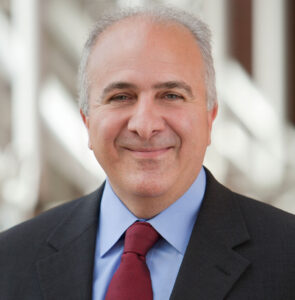 Hands down, the most important transformation in the biotech industry over the past 40 years is the digitization of biological and chemical data. Back in my days at ABI (Applied Biosystems) during the Human Genome Project, I saw the immense potential of the technology—but the field of genomics would not be anywhere close to where we are today without the digitization of the data. Can you imagine comparing gels or films today to determine whether or not a mutation was present? In drug and vaccine development and drug repurposing, we can get from concept to clinical trial faster than ever, thanks to computational modeling and huge libraries of data. Digitization has basically taken us from the Dark Ages to the Enlightenment in the world of biotech.
Hands down, the most important transformation in the biotech industry over the past 40 years is the digitization of biological and chemical data. Back in my days at ABI (Applied Biosystems) during the Human Genome Project, I saw the immense potential of the technology—but the field of genomics would not be anywhere close to where we are today without the digitization of the data. Can you imagine comparing gels or films today to determine whether or not a mutation was present? In drug and vaccine development and drug repurposing, we can get from concept to clinical trial faster than ever, thanks to computational modeling and huge libraries of data. Digitization has basically taken us from the Dark Ages to the Enlightenment in the world of biotech.
Debra Goldfarb
Director, Amazon Web Services (AWS) • AI/Data
 COVID-19 represents the perfect storm to see just how far we have come since April 2003, when the first human genome was sequenced—a seminal accomplishment taking nearly 13 years. For perspective, Moderna designed and shipped the first clinical batch for its coronavirus vaccine in just 42 days. Scientific breakthroughs in understanding biological mechanisms, coupled with powerful tools like cryo-electron microscopy and massive-scale cloud computing, have fundamentally changed our ability to understand disease, identify cures, and deliver more targeted therapeutics. As extraordinary as these advances are, the challenges facing humanity demand that the benefits are shared equally and are accessible to everyone, irrespective where you were born. It is a moral imperative.
COVID-19 represents the perfect storm to see just how far we have come since April 2003, when the first human genome was sequenced—a seminal accomplishment taking nearly 13 years. For perspective, Moderna designed and shipped the first clinical batch for its coronavirus vaccine in just 42 days. Scientific breakthroughs in understanding biological mechanisms, coupled with powerful tools like cryo-electron microscopy and massive-scale cloud computing, have fundamentally changed our ability to understand disease, identify cures, and deliver more targeted therapeutics. As extraordinary as these advances are, the challenges facing humanity demand that the benefits are shared equally and are accessible to everyone, irrespective where you were born. It is a moral imperative.
Ashu Singhal
Co-Founder and President, Benchling • AI/Data
 I’m amazed by the sheer breadth of applied, practical uses of biotechnology. No longer confined to our laboratories, biotechnology is now in our clinics, farmlands, retail environments, factories, and more.
I’m amazed by the sheer breadth of applied, practical uses of biotechnology. No longer confined to our laboratories, biotechnology is now in our clinics, farmlands, retail environments, factories, and more.
Exciting innovations ranging from single-cell sequencing and isolation to high-resolution imaging have dramatically improved our ability to interrogate and understand mechanistic biology. They have also generated massive amounts of data. Fortunately, difficulties in interpreting all the data are being overcome by cloud computing and machine learning.
I’m intrigued by technologies that use living systems to solve our most pressing problems in health, food security, climate change, and energy, including technologies that can instruct our own cells to manufacture therapeutic products. These technologies can shape the future. I’m hopeful that we’ll exercise humility when we use them.
Matthew Trunnell
Data Strategy Consultant • AI/Data
 Biotechnology has, in just a few decades, introduced an astonishing array of tools and techniques to explore human biology, generating an exponentially growing corpus of biomedical data. Thus, biotechnology engendered bioinformatics, inviting researchers from diverse fields—linguistics, computer science, even oceanography—to participate in the study of this most complex system. We have learned a tremendous amount in recent years, yet we continue to generate scientific questions more quickly than answers. Inevitably, though, our growing understanding of human biology is leading us to develop abilities to change human biology. The next few decades will undoubtedly see expansion of these abilities, with one question becoming more pressing than ever: What does it mean to be human?
Biotechnology has, in just a few decades, introduced an astonishing array of tools and techniques to explore human biology, generating an exponentially growing corpus of biomedical data. Thus, biotechnology engendered bioinformatics, inviting researchers from diverse fields—linguistics, computer science, even oceanography—to participate in the study of this most complex system. We have learned a tremendous amount in recent years, yet we continue to generate scientific questions more quickly than answers. Inevitably, though, our growing understanding of human biology is leading us to develop abilities to change human biology. The next few decades will undoubtedly see expansion of these abilities, with one question becoming more pressing than ever: What does it mean to be human?
Gbola Amusa, MD
Partner and Chief Scientific Officer, Chardan • Analysts/VC
 Driven by biotech, the biopharma industry has increasingly moved away from a kind of industrial serendipity associated with less-targeted small-molecule drugs toward rationally designed and sometimes transformative biotech therapeutics relying on understood biology. Such innovations are relevant even at a societal level, as seen with COVID-19 vaccines. The future of biotech will be defined by genetic medicines, cell therapies, and tissue engineering in fields such as neuroscience, cardiovascular disease, oncology, and transplantation.
Driven by biotech, the biopharma industry has increasingly moved away from a kind of industrial serendipity associated with less-targeted small-molecule drugs toward rationally designed and sometimes transformative biotech therapeutics relying on understood biology. Such innovations are relevant even at a societal level, as seen with COVID-19 vaccines. The future of biotech will be defined by genetic medicines, cell therapies, and tissue engineering in fields such as neuroscience, cardiovascular disease, oncology, and transplantation.
Let’s not forget that with the advent of biosimilars and local production of biotech products, the promise of biotech is increasingly a factor for improved healthcare outcomes globally, and not just in the wealthiest countries. Benefits will also be broadly shared if technologies such as gene editing find nontherapeutic and globally relevant applications in fields such as biofuels and food safety.
Charmaine Chan, PhD
Investment Principal, Cambiar Investors • Analysts/VC
 Biotech has gone through multiple S-curve evolutions and is likely on the steepening phase of another compressed cycle, given fundamental advances in how we query biology aided by the sheer amount of computational power and rapid data generation. We are likely to make great strides in the application of biotech not only to human medicines but also to agriculture, materials science, and manufacturing. However, biotech with respect to healthcare does not exist in a vacuum, as these products are 1) subjected to a high regulatory bar, 2) nondiscretionary, and 3) transitioned into public goods after an exclusivity period. These have led to peculiar push-pull dynamics in how these goods are priced, access-gated, and paid for, and how returns on investments are generated for investors. If this biotech S-curve is to reach its full potential, the public debate on whether healthcare is a right or a privilege must be more granular, guidance in development of novel therapies streamlined, and incentives for innovators/healthcare providers better aligned with costs/benefits for patients.
Biotech has gone through multiple S-curve evolutions and is likely on the steepening phase of another compressed cycle, given fundamental advances in how we query biology aided by the sheer amount of computational power and rapid data generation. We are likely to make great strides in the application of biotech not only to human medicines but also to agriculture, materials science, and manufacturing. However, biotech with respect to healthcare does not exist in a vacuum, as these products are 1) subjected to a high regulatory bar, 2) nondiscretionary, and 3) transitioned into public goods after an exclusivity period. These have led to peculiar push-pull dynamics in how these goods are priced, access-gated, and paid for, and how returns on investments are generated for investors. If this biotech S-curve is to reach its full potential, the public debate on whether healthcare is a right or a privilege must be more granular, guidance in development of novel therapies streamlined, and incentives for innovators/healthcare providers better aligned with costs/benefits for patients.
Matthew Cobb, PhD
Professor of Biology, University of Manchester and author of Genetic Dreams • Analysts/VC
 The last 40 years have seen genetic engineering lead to astonishing developments in science, medicine, and agriculture. The challenge of the next 40 years will be to ensure that those discoveries—and those to come—benefit the many, not the few. Our ingenuity must be deployed not only to discover new potential therapies, but also to find ways of rendering them simple, safe, and cheap. Potential therapies for sickle-cell disease are astonishing, but although there are millions of people around the world who suffer from this condition, very few will be able to access treatment because of healthcare inequalities. Genetically modified (GM) crops have spread around the world, but uptake in many countries is poor, partly because the crops that are engineered, and the characteristics they possess, do not suit small-scale or subsistence farming. It is striking that there are few GM crops that resist diseases rather than pests. Co-developing solutions to these problems of scalability, appropriateness, and availability is an even greater intellectual challenge than developing some impressive new genetics.
The last 40 years have seen genetic engineering lead to astonishing developments in science, medicine, and agriculture. The challenge of the next 40 years will be to ensure that those discoveries—and those to come—benefit the many, not the few. Our ingenuity must be deployed not only to discover new potential therapies, but also to find ways of rendering them simple, safe, and cheap. Potential therapies for sickle-cell disease are astonishing, but although there are millions of people around the world who suffer from this condition, very few will be able to access treatment because of healthcare inequalities. Genetically modified (GM) crops have spread around the world, but uptake in many countries is poor, partly because the crops that are engineered, and the characteristics they possess, do not suit small-scale or subsistence farming. It is striking that there are few GM crops that resist diseases rather than pests. Co-developing solutions to these problems of scalability, appropriateness, and availability is an even greater intellectual challenge than developing some impressive new genetics.
Leland Gershell, MD, PhD
Managing Director, Equity Research—Biopharma, Oppenheimer & Co. • Analysts

I cannot help but be struck by the reach that biotech has had into so many fundamental aspects of our lives—perhaps broader than any other industry, past and present. There are innovations that have benefitted our food supply, provided us with alternative and renewable energy resources, and expanded our repertoire of “smart” materials and industrial catalysts, to name just a few. On the therapeutics landscape, we have seen the long-held promises of RNA interference and gene therapy come of age, and we are closing in on making the prospect of addressing certain diseases through in vivo editing a reality. Yet, notwithstanding the countless and profound improvements to the human condition that the collective biotech enterprise has so far brought to bear, I continue to be awed by the frontiers that await us—whether they are diseases to tackle, technologies to refine, or scientific theories to elucidate. Four decades in, we’re just getting started.
Brad Loncar
CEO, Loncar Investments • Analysts/VC
 My hope for the future of biotech is that gene editing will deliver on its promise to provide functional cures for monogenic diseases and that therapies will be accessible to all who seek them. Over my lifetime, it has been exciting to see the field go from the early days of reading the genome to now being able to edit it. Gene editing is a big responsibility and must be used carefully, but it can change many lives for the better. Recent proof-of-concept data has shown that CRISPR-Cas9 gene editing can be used in vivo. This was a milestone for the field, and I hope it is a sign that many genetic diseases are about to be profoundly changed.
My hope for the future of biotech is that gene editing will deliver on its promise to provide functional cures for monogenic diseases and that therapies will be accessible to all who seek them. Over my lifetime, it has been exciting to see the field go from the early days of reading the genome to now being able to edit it. Gene editing is a big responsibility and must be used carefully, but it can change many lives for the better. Recent proof-of-concept data has shown that CRISPR-Cas9 gene editing can be used in vivo. This was a milestone for the field, and I hope it is a sign that many genetic diseases are about to be profoundly changed.
Barry Greene
CEO, Sage Therapeutics
 Major scientific and regulatory developments—as well as investment—in biotech over the last 40 years have paved the way for new technologies and approaches that are allowing us to better understand organs like the brain. But what I’m most excited about is the future—specifically, the next decade of innovation in brain health.
Major scientific and regulatory developments—as well as investment—in biotech over the last 40 years have paved the way for new technologies and approaches that are allowing us to better understand organs like the brain. But what I’m most excited about is the future—specifically, the next decade of innovation in brain health.
The central nervous system (CNS) space is at a similar inflection point that oncology was 20 years ago, where we are now using new tools like imaging and diagnostics to explore new pathways, brain circuitry, and functionality at the molecular level. There’s certainly a lot more to uncover, but real innovation is occurring in CNS and brain health that will have a potentially meaningful impact on hundreds of millions of people across numerous mood, neurologic, and neuropsychiatric disorders.
I’m also hopeful that biotech companies will be proactive in establishing value-based arrangements with payers and providers. I’m looking forward to the continued evolution of the focus on the patient, as patient advocacy continues to step up in promoting the patient’s voice and encouraging education and funding.
Sandy Macrae, PhD
CEO, Sangamo Therapeutics
B iotechnology, specifically genomics, is ushering in a new era where there are three primary modes of medicine: prevention through vaccines, treatment with small molecules, and cures through genomic medicine. We’ll continue to advance genomic medicine with the care and purposefulness required while pioneering a new field of medicine for patients.
iotechnology, specifically genomics, is ushering in a new era where there are three primary modes of medicine: prevention through vaccines, treatment with small molecules, and cures through genomic medicine. We’ll continue to advance genomic medicine with the care and purposefulness required while pioneering a new field of medicine for patients.
Technologies like zinc finger genome engineering enable us to address severe disease at its source on the genome. It puts in reach our goal to create life-changing or life-saving medicines for patients suffering from diseases for which existing treatment options are inadequate or don’t exist.
There are challenges ahead. Improving delivery efficiency is a priority, as is evolving aspects of the healthcare system to accommodate genomic medicine. However, these are surmountable and will not inhibit shifting the treatment of severe diseases from symptom management to lasting cures.
Andrew Hessel
Co-Founder and Chairman, Genome Project-write and Chief Exploration Officer, Officinae Bio
 The most remarkable shift in biotechnology over the last 40 years has been digitization. It’s resulted in R&D done at a speed, cost, and scale that was impossible before. Modern biotech teaches us that life is code—and programmable. We’ve learned to read, comprehend, and now write life’s digital instructions. We can identify, dissect, and understand natural systems at atomic resolution. We can produce biomolecules, systems, and even complete organisms that exist only because we can imagine and engineer them. This is a revolution in evolution, and the trend is clear: natural and artificial selection will be overtaken by biology made with intention. As the legendary author and pioneer Stewart Brand noted in 1968, we are as gods and might as well get good at it. I believe we are and we will.
The most remarkable shift in biotechnology over the last 40 years has been digitization. It’s resulted in R&D done at a speed, cost, and scale that was impossible before. Modern biotech teaches us that life is code—and programmable. We’ve learned to read, comprehend, and now write life’s digital instructions. We can identify, dissect, and understand natural systems at atomic resolution. We can produce biomolecules, systems, and even complete organisms that exist only because we can imagine and engineer them. This is a revolution in evolution, and the trend is clear: natural and artificial selection will be overtaken by biology made with intention. As the legendary author and pioneer Stewart Brand noted in 1968, we are as gods and might as well get good at it. I believe we are and we will.
Michelle McMurry-Heath, MD, PhD
President and CEO, BIO
 Forty years ago, the biotechnology industry was in its infancy. Scientists were starting to work with recombinant DNA, and Genentech became the first company to attempt to bring biotech products to the market. Today, that same technology is advancing a new revolution, the “biorevolution,” which has the potential to vastly improve our health, stimulate the economy, and tackle climate change.
Forty years ago, the biotechnology industry was in its infancy. Scientists were starting to work with recombinant DNA, and Genentech became the first company to attempt to bring biotech products to the market. Today, that same technology is advancing a new revolution, the “biorevolution,” which has the potential to vastly improve our health, stimulate the economy, and tackle climate change.
Our industry’s lifesaving response to COVID-19 highlights this amazing potential, and new and exciting biotechnologies are being discovered every day. With public policy that supports—not thwarts—innovation and its breakthroughs, our industry will create a better tomorrow for everyone. Together, let’s support a vibrant biotechnology and innovation ecosystem that drives new solutions for a brighter future.
Lopa Mishra, MD
Director, Institute of Bioelectronic Medicine, Feinstein Institutes for Medical Research
 The most exciting development in biotechnology is the rise of bioelectronic medicine from our molecular understanding to the development of devices to tackle some of the most devastating diseases. It’s caught the eye of the public—just look at Elon Musk and his Neuralink—and advances are progressing at light speed. Since the first vagus nerve implant was approved for epilepsy in 1997, we have seen the development of new and improved devices, with the promise to restore movement and the sense of touch in paralyzed patients. Scientists have progressed their research to noninvasive stimulation (over the skin, through the ear, via ultrasound) as well.
The most exciting development in biotechnology is the rise of bioelectronic medicine from our molecular understanding to the development of devices to tackle some of the most devastating diseases. It’s caught the eye of the public—just look at Elon Musk and his Neuralink—and advances are progressing at light speed. Since the first vagus nerve implant was approved for epilepsy in 1997, we have seen the development of new and improved devices, with the promise to restore movement and the sense of touch in paralyzed patients. Scientists have progressed their research to noninvasive stimulation (over the skin, through the ear, via ultrasound) as well.
From a preclinical perspective, my colleagues have discovered the ability to turn off and on neurons that signal proteins that spark inflammation, paving the way for clinical trials for patients with Crohn’s disease, rheumatoid arthritis, obesity, and diabetes. Examining and altering the gut microbiome and targeting the liver-brain axis to alter fatty liver disease and cancer development, is another priority. I’m most excited to see where bioelectronic medicine will lead in cancer treatment—consider the ability to harness the body’s own immune response to target cancer cells, all through electrical stimulation. This science is no longer “what if” but “when.”
Andreas Plückthun, PhD
Professor of Biochemistry, University of Zurich
 From my own personal perspective, these decades are characterized by our enormously increased abilities to engineer proteins. From its modest beginnings, encompassing site-directed mutagenesis and 3D modeling, to the advent of display methods (ribosome, phage, and yeast display), combined with efficient library generations and error-prone methods, the idea of “evolution in the test tube” has become reality: first in creating synthetic antibodies, later in other scaffolds. In parallel, structure determination has become robust enough to be part of every project (albeit still quite far from routine). Finally, the recent breakthroughs of bringing machine learning into structure prediction will boost de novo design. Computational design and experimental evolution will go together even more closely than they already do now. Therapeutic proteins, and not just antibodies, are here to stay. Moreover, we can now apply these technologies to precision gene targeting—the next frontier.
From my own personal perspective, these decades are characterized by our enormously increased abilities to engineer proteins. From its modest beginnings, encompassing site-directed mutagenesis and 3D modeling, to the advent of display methods (ribosome, phage, and yeast display), combined with efficient library generations and error-prone methods, the idea of “evolution in the test tube” has become reality: first in creating synthetic antibodies, later in other scaffolds. In parallel, structure determination has become robust enough to be part of every project (albeit still quite far from routine). Finally, the recent breakthroughs of bringing machine learning into structure prediction will boost de novo design. Computational design and experimental evolution will go together even more closely than they already do now. Therapeutic proteins, and not just antibodies, are here to stay. Moreover, we can now apply these technologies to precision gene targeting—the next frontier.
Frances H. Arnold, PhD
Linus Pauling Professor of Chemical Engineering, Biochemistry, and Bioengineering, California Institute of Technology and Nobel Laureate
 In 40 years, we’ve transitioned from “everything is hard” to being able to read, write, and edit any DNA we want. We still can’t compose the code for new function terribly well, however, but progress is being made. Structure prediction experienced a giant leap thanks to machine learning, and we can expect similar leaps in prediction of function and protein generation/design. I want to see biology do her beautiful work for us, in the form of DNA-encoded chemical factories, molecular machines, materials, therapies, recycling systems, nutrition, and so much more.
In 40 years, we’ve transitioned from “everything is hard” to being able to read, write, and edit any DNA we want. We still can’t compose the code for new function terribly well, however, but progress is being made. Structure prediction experienced a giant leap thanks to machine learning, and we can expect similar leaps in prediction of function and protein generation/design. I want to see biology do her beautiful work for us, in the form of DNA-encoded chemical factories, molecular machines, materials, therapies, recycling systems, nutrition, and so much more.
Alan Fletcher, PhD
Senior Vice President, Life Science and Technology, PerkinElmer
 Our ability to increase the probability of success in the clinic through the expansion of disease-relevant, preclinical models of disease has certainly been one of the biggest changes, as is the move from a one-drug-fits-all approach to making progress in precision medicine. Our industry has also changed to one that is data driven since the completion of the human genome, and AI is enabling new insights such as protein structure prediction with innovations like Google’s DeepMind AlphaFold. Given these and many more advances, if I had one overarching hope for the future, it would be that personalized medicine becomes the norm and ceases to be the exception … leading to more effective drug development and therapeutic outcomes for all.
Our ability to increase the probability of success in the clinic through the expansion of disease-relevant, preclinical models of disease has certainly been one of the biggest changes, as is the move from a one-drug-fits-all approach to making progress in precision medicine. Our industry has also changed to one that is data driven since the completion of the human genome, and AI is enabling new insights such as protein structure prediction with innovations like Google’s DeepMind AlphaFold. Given these and many more advances, if I had one overarching hope for the future, it would be that personalized medicine becomes the norm and ceases to be the exception … leading to more effective drug development and therapeutic outcomes for all.
Alec Ford
CEO, Karius • Infectious Disease
 In medicine, genomics applications started in prenatal care, oncology, and organ and cell transplantation. Recently, doctors began using metagenomic testing in routine care to identify multiple infectious pathogens from blood samples. Today, we can take a single blood sample, sequence all the cell-free DNA, analyze the genomes we detect, and link them to infection-causing pathogens.This access has changed the way we think about developing treatments, leading to our understanding that one therapeutic may not be suitable for everyone with that disease. It’s allowed us to focus instead on identifying those who are more likely to respond to certain approaches.We’re learning more about the connection between microbiomes and disease states. We’re also learning more about how pathogens learn to evade our existing therapies. This knowledge combined with early detection is going to help prevent and overcome antimicrobial resistance.
In medicine, genomics applications started in prenatal care, oncology, and organ and cell transplantation. Recently, doctors began using metagenomic testing in routine care to identify multiple infectious pathogens from blood samples. Today, we can take a single blood sample, sequence all the cell-free DNA, analyze the genomes we detect, and link them to infection-causing pathogens.This access has changed the way we think about developing treatments, leading to our understanding that one therapeutic may not be suitable for everyone with that disease. It’s allowed us to focus instead on identifying those who are more likely to respond to certain approaches.We’re learning more about the connection between microbiomes and disease states. We’re also learning more about how pathogens learn to evade our existing therapies. This knowledge combined with early detection is going to help prevent and overcome antimicrobial resistance.
Iswariya Venkataraman, PhD
Associate Director of Scientific Affairs, EUROIMMUN, a PerkinElmer • Translational Medicine
 Computer-aided immunofluorescence microscopy represents a milestone development for diagnostic laboratories, as it enables on-screen evaluation of indirect immunofluorescence assays, thus eliminating the need for a dark room. Automated microscopy systems provide fast digital acquisition of immunofluorescence images, as well as result interpretation and archiving. State-of-the-art models incorporate artificial intelligence based on deep convolutional neural networks for accurate positive-negative classification, pattern recognition, and titer designation. Automated systems with deep-learning software can be used to evaluate, for example, ANA, ANCA, CLIFT, tissues such as liver, kidney and stomach, and recombinant-cell substrates.
Computer-aided immunofluorescence microscopy represents a milestone development for diagnostic laboratories, as it enables on-screen evaluation of indirect immunofluorescence assays, thus eliminating the need for a dark room. Automated microscopy systems provide fast digital acquisition of immunofluorescence images, as well as result interpretation and archiving. State-of-the-art models incorporate artificial intelligence based on deep convolutional neural networks for accurate positive-negative classification, pattern recognition, and titer designation. Automated systems with deep-learning software can be used to evaluate, for example, ANA, ANCA, CLIFT, tissues such as liver, kidney and stomach, and recombinant-cell substrates.
The recent advent of live microscopy, whereby the evaluation is performed completely on-screen, provides a new level of speed and convenience for immunofluorescence diagnostics, as well as high standardization between microscopes and operators. We consider this technology to be a game-changer in the field.
Stephen Martin, PhD
Vice President, Global Research, Waters • Bioprocessing
 When I think about how far biotechnology has come, it would have been viewed as a fantasy to someone 40 years ago. A key to that progress is the symbiotic relationship between biotechnology and analytical technology.
When I think about how far biotechnology has come, it would have been viewed as a fantasy to someone 40 years ago. A key to that progress is the symbiotic relationship between biotechnology and analytical technology.
The early 80’s saw the development of recombinant protein therapeutics at a time when state-of-the-art of the analytics were fine-tuned for small molecules. By the early 90’s, researchers with an LC-MS system could rapidly characterize the purity, primary sequence, and post translational modifications of recombinant proteins, thus defining the critical quality attributes of the therapeutics.
Again and again over the last four decades, we’ve seen the action-reaction sequence play out. Today, the cell and gene therapy field is pushing analytics to separate megadalton species employing new chromatographic columns and novel mass spectrometers capable of characterizing empty, partial, and fully-complete capsids.
I see a future that holds the promise of fit-for-purpose analytics driven by AI/ML, informatics, and regulatory compliance that de-couples the manufacturing process from the product leading to faster progress in bringing patients new disease treatments, and even cures.
Federico Pollano
Senior Vice President, Business Development, Rentschler Biopharma • Bioprocessing
 New targets and approaches have enabled biotech to address both major and rare diseases. In manufacturing, I have seen incredible innovations transition from science to industrial biotechnology, especially with regards to characterization. The highly precise analytical methods available today are not only improving development, but also enabling deep dives into disease and drug targets to find better treatments. This all culminated in what we experienced with the COVID-19 mRNA-based vaccines–the ability to take a novel technology and develop, produce, and get regulatory signoff at lightning speed. These achievements would not have been possible even five years ago.
New targets and approaches have enabled biotech to address both major and rare diseases. In manufacturing, I have seen incredible innovations transition from science to industrial biotechnology, especially with regards to characterization. The highly precise analytical methods available today are not only improving development, but also enabling deep dives into disease and drug targets to find better treatments. This all culminated in what we experienced with the COVID-19 mRNA-based vaccines–the ability to take a novel technology and develop, produce, and get regulatory signoff at lightning speed. These achievements would not have been possible even five years ago.
Sadly, we have also seen that access is incredibly unequal. I feel a deep responsibility to help make innovative medicines available to all, no matter where someone lives. Leveraging biopharmaceutical manufacturing technologies, we can improve yields, decentralize production and do much more to make sure patients get what they need.
Birgit Girshick
Corporate Executive Vice President, Discovery and Safety Assessment, Biologics Testing Solutions, and Avian Vaccine Services, Management, Charles River Laboratories • Translational Medicine
 The first gene therapy was approved by the FDA in December 2017. As of today, the FDA has approved 22 cell and gene therapy (C>) products, and over 15% of the biopharma R&D pipeline is C> programs. This accelerated growth is astounding. As the industry invests in this space, we can transform the world of drug development by introducing potentially curative therapies for diseases which have high patient need. The move towards C> represents a paradigm shift for patients – bringing the promise of personalized medicine from concept to reality.
The first gene therapy was approved by the FDA in December 2017. As of today, the FDA has approved 22 cell and gene therapy (C>) products, and over 15% of the biopharma R&D pipeline is C> programs. This accelerated growth is astounding. As the industry invests in this space, we can transform the world of drug development by introducing potentially curative therapies for diseases which have high patient need. The move towards C> represents a paradigm shift for patients – bringing the promise of personalized medicine from concept to reality.
Charles River saw this shift coming early on the horizon and took the steps needed to provide services to this promising segment of the industry. Down the road, more and more patients will benefit from cell and gene therapies that are more precise and effective and have fewer side effects than today’s treatments.
Jeffrey S. Buguliskis, PhD
Technical Editor, GEN
 As the technical editor, I have the privilege of working with investigators and companies doing the most advanced science. Seeing how fast these technologies change, it’s not difficult for me to envision even greater innovation over the next four decades. The tricky part is narrowing down what to discuss in a small space, but here goes.
As the technical editor, I have the privilege of working with investigators and companies doing the most advanced science. Seeing how fast these technologies change, it’s not difficult for me to envision even greater innovation over the next four decades. The tricky part is narrowing down what to discuss in a small space, but here goes.
Genome editing is a seemingly unstoppable force and truly holds one of the greatest therapeutic potentials. It is a safe assumption that 40 years from now, most single-gene diseases will vanish or be treatable—along with many polygenic disorders and cancers. Artificial intelligence will streamline the drug discovery process and biomanufacturing, speeding curative therapies to patients in need. As sequencing technologies continue to improve and become exponentially cheaper, researchers will better understand our microbiome and its impact on not only disease but also everyday life—which is ultimately even more valuable knowledge. These are just a scarce few of the innovation predictions I foresee on the horizon. I only hope to be around for GEN’s oak anniversary to see how close my predictions are to reality
Kevin Davies, PhD
Editor-at-Large, GEN, Executive Editor, The CRISPR Journal, and the author of Editing Humanity
 What a difference 40 years makes! When GEN launched in 1981, we didn’t have a bacterial genome sequence, let alone the human genome (which we assumed possessed 100,000 genes). The $1,000 genome was pure fantasy. And although the concept of gene therapy had been floated, the idea that we could repair our own DNA was science fiction. Twenty-five years after its first description, Doudna and Charpentier turned CRISPR into a programmable “genetic scissors.” And here we are, celebrating a near-miraculous CRISPR cure for sickle-cell disease—all praise to Victoria Gray and her fellow trial volunteers—and early proof of in vivo gene editing.
What a difference 40 years makes! When GEN launched in 1981, we didn’t have a bacterial genome sequence, let alone the human genome (which we assumed possessed 100,000 genes). The $1,000 genome was pure fantasy. And although the concept of gene therapy had been floated, the idea that we could repair our own DNA was science fiction. Twenty-five years after its first description, Doudna and Charpentier turned CRISPR into a programmable “genetic scissors.” And here we are, celebrating a near-miraculous CRISPR cure for sickle-cell disease—all praise to Victoria Gray and her fellow trial volunteers—and early proof of in vivo gene editing.
One of the lessons of the CRISPR revolution is the value of supporting basic research. When Francisco Mojica proposed the term “CRISPR” in 2001, he was fixated on understanding the selective advantages of halophilic bacteria, not the secret to antiviral immunity. CRISPR, base, and prime editing are fueling a new era of biotechnology. Who knows what the next 40 years have in store!
Julianna LeMeiux, PhD
Senior Science Writer, GEN
 Covering the biotech industry as a science writer frequently feels like drinking from a fire hose. The unrelenting pace of notable advancements, remarkable innovations, and historic breakthroughs provides an endless source of interesting stories. This has never been truer then over the last 18 months. During the COVID-19 pandemic, we have witnessed an unprecedented pace of research, in both academia and industry, resulting in a deluge of discoveries. Beyond the pandemic, innovators working in gene therapy and CRISPR are on the cusp of revolutionizing health and medicine. In addition, the next wave of genome-based technologies, such as spatial transcriptomics and DNA writing, are poised to lead their own revolution. Regardless of the field, the future of biotech is certain to deliver a continuous stream of interesting stories—and to keep us very busy.
Covering the biotech industry as a science writer frequently feels like drinking from a fire hose. The unrelenting pace of notable advancements, remarkable innovations, and historic breakthroughs provides an endless source of interesting stories. This has never been truer then over the last 18 months. During the COVID-19 pandemic, we have witnessed an unprecedented pace of research, in both academia and industry, resulting in a deluge of discoveries. Beyond the pandemic, innovators working in gene therapy and CRISPR are on the cusp of revolutionizing health and medicine. In addition, the next wave of genome-based technologies, such as spatial transcriptomics and DNA writing, are poised to lead their own revolution. Regardless of the field, the future of biotech is certain to deliver a continuous stream of interesting stories—and to keep us very busy.
Kevin Mayer
Senior Editor, GEN
 Rather than discuss the significance of GEN hitting its 40-year mark, I’ll dwell on a much smaller figure: two years. That’s roughly how much time passes before the popular press notices promising technologies that have already received coverage in trade publications such as GEN. This phenomenon is exemplified by CRISPR technology. Although being among the first to spread the word about developments such as CRISPR is a privilege, being less privileged would be preferable. That is, it would be better if a broad awareness of new technologies could be achieved in less than two years. I’m thinking of developments that could lessen the impacts of climate change—developments such as the use of genome editing in agricultural applications, the use of gene drives to control insect populations, and the use of designer proteins to assist recycling efforts. Spreading the word about the many challenges posed by climate change might impart a sense of urgency. Discussing potential solutions might stave off despair and, more important, encourage action.
Rather than discuss the significance of GEN hitting its 40-year mark, I’ll dwell on a much smaller figure: two years. That’s roughly how much time passes before the popular press notices promising technologies that have already received coverage in trade publications such as GEN. This phenomenon is exemplified by CRISPR technology. Although being among the first to spread the word about developments such as CRISPR is a privilege, being less privileged would be preferable. That is, it would be better if a broad awareness of new technologies could be achieved in less than two years. I’m thinking of developments that could lessen the impacts of climate change—developments such as the use of genome editing in agricultural applications, the use of gene drives to control insect populations, and the use of designer proteins to assist recycling efforts. Spreading the word about the many challenges posed by climate change might impart a sense of urgency. Discussing potential solutions might stave off despair and, more important, encourage action.
Alex Philippidis
Senior Business Editor, GEN
 Few sectors “follow the money” as well as biotech. Successful new technologies, old-fashioned business sense, and the COVID-19 pandemic have drawn billions of dollars in capital to public and private companies, in ways experts could hardly foresee a decade ago.
Few sectors “follow the money” as well as biotech. Successful new technologies, old-fashioned business sense, and the COVID-19 pandemic have drawn billions of dollars in capital to public and private companies, in ways experts could hardly foresee a decade ago.
The more capital regions attract, the more researchers, companies, and institutions they draw, explaining why the same 10 regions have appeared every year since 2014 in GEN’s A-List of Top 10 U.S. Biopharma Clusters. Looking ahead, however, I see at least one or two new Top 10 regions emerging due to broader business trends, such as population shifts and greater competition among regions for life sciences companies and jobs.
Anjali A. Sarkar, PhD
Science Editor, GEN, Clinical OMICs, and GEN Protocols
 Biotechnology has at its fingertips powerful tools whose many applications have yet to be identified and fully realized. To reach its potential and simultaneously benefit the planet and all its inhabitants, the industry needs policies that are guided by sound judgement and that balance innovative curiosity with potential risk. The industry also needs a scientifically informed and engaged global population that is capable of foresight and kindness. I hope biotechnology will be the linchpin to a healthier, greener, more productive, more sustainable, and far more peaceful global economy where we continue to explore nature with an open mind, with deep reverence for its laws, and an ever-vigilant eye on our predicaments that creative applications of basic biological knowledge and insights can help resolve.
Biotechnology has at its fingertips powerful tools whose many applications have yet to be identified and fully realized. To reach its potential and simultaneously benefit the planet and all its inhabitants, the industry needs policies that are guided by sound judgement and that balance innovative curiosity with potential risk. The industry also needs a scientifically informed and engaged global population that is capable of foresight and kindness. I hope biotechnology will be the linchpin to a healthier, greener, more productive, more sustainable, and far more peaceful global economy where we continue to explore nature with an open mind, with deep reverence for its laws, and an ever-vigilant eye on our predicaments that creative applications of basic biological knowledge and insights can help resolve.

